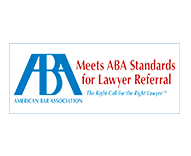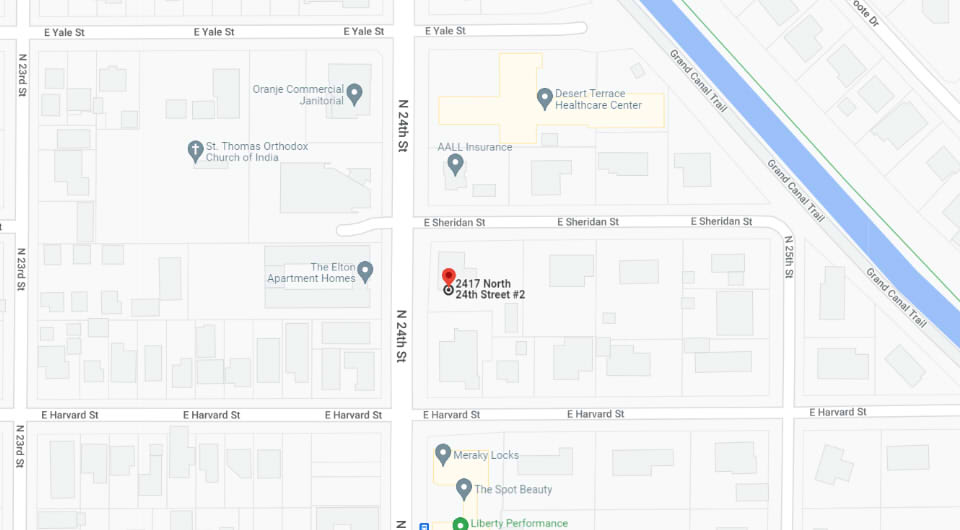Preeclampsia is a severe medical condition that can cause fatal harm to a mother or fetus. The solution is to deliver the baby early to avoid the risk of injury to the child and mother. A doctor who fails to diagnose preeclampsia on time could be liable for any harm that befalls the mother or child. A misdiagnosis of preeclampsia could cost the medical provider a fine or even jail. If you or your unborn child has suffered preeclampsia-associated harm because of your physician's negligence, you should seek the services of a personal injury attorney. At the Phoenix Personal Injury Attorney Law Firm, we have helped many victims of medical malpractice to seek compensation for their damages. We will help you seek the compensation you deserve.
Preeclampsia Explained
Preeclampsia is a hypertension disease that usually affects expectant mothers. There is no specific cause of the disease, but the risk factors include the following:
- When the mother has a history of high blood pressure.
- Multiple gestations.
- Being overweight.
- Being over 40 years old.
- You have type 1 or 2 diabetes.
- You have lupus or an autoimmune disease.
- You became pregnant using in vitro fertilization.
- You have a history of thrombophilia, a condition that escalates the risk of blood clots.
- You had preeclampsia during a previous pregnancy.
- It is your first time at birth.
Symptoms of Preeclampsia include the following:
- Trouble breathing.
- Sudden weight gain.
- Swelling of the face or hands.
- Nausea and vomiting.
- Pain in the upper stomach area.
- Changes in vision, including seeing spots, blurry vision, or notable changes in your eyesight.
- A headache that does not go away.
- Low platelet count.
- High protein in the urine.
Generally, preeclampsia occurs during postpartum and pregnancy without symptom manifestation. If preeclampsia is not diagnosed early, you and your baby could face health risks and other abnormalities. During pregnancy, preeclampsia can restrict your arteries, causing abruption to the placenta. This can only be avoided if the condition is diagnosed and treated early.
The Risks To The Mother And Infant
In most cases, a mother could die because of preeclampsia. The child could also face the following risks unless delivery is induced as soon as is feasible:
- Death.
- Acidosis.
- Low oxygen levels, resulting in brain damage.
Complications Of Preeclampsia
Some of the complications of preeclampsia include:
Cardiovascular Disease
Having preeclampsia could cause you to suffer blood vessels and heart disease in the future. The risk could even be greater if you have had a preterm delivery or preeclampsia more than once.
Eclampsia
Eclampsia is the beginning of a coma or seizures with symptoms or signs of preeclampsia. It is hard to predict if a patient with preeclampsia will suffer eclampsia. You can suffer eclampsia without any prior observable symptoms or signs of preeclampsia.
The symptoms that could manifest before seizures include altered behaviors or mental confusion, vision problems, and severe headaches. However, there are usually no warning signs or symptoms. You could suffer eclampsia during, before, or after delivery.
HELLP Syndrome
HELLP is also referred to as low platelet count, elevated liver enzymes, hemolysis, or the destruction of red blood cells. HELLP is a severe form of preeclampsia, which damages some organ systems. This form of preeclampsia is usually life-threatening to mothers and their fetuses. A mother could also suffer lifelong problems.
Signs and symptoms of HELLP syndrome include:
- A general feeling of illness or being unwell.
- Upper right belly pain.
- Headache.
- Nausea and vomiting.
At times, HELLP syndrome occurs abruptly, even before high blood pressure is detected. It could also happen without any signs.
Placental Abruption
Having preeclampsia could escalate your risk of placental abruption. Preeclampsia causes the placenta to separate from the uterus's inner wall before delivery. Severe abruption can lead to severe bleeding that can cost the life of the mother and her baby.
Your OB-GYN can reattach a placenta, which is separated from the uterus wall. The reattachment depends on the circumstances, like:
- The baby is close to full term — If the placenta abruption seems minimal after 34 weeks of pregnancy, a vaginal delivery could be possible if it is closely monitored. However, you could require a C-section if the abruption worsens.
- The baby is not close to full term — You could be hospitalized for close monitoring if the abruption seems mild and the baby's heart rate is normal but too early to be born. You also could be advised to rest at home if the bleeding stops and your baby's condition is stable. If early delivery is recommended, the medics will give you medication to help your baby's lungs mature.
Preterm Birth
Preeclampsia can cause unplanned preterm delivery. A delivery is preterm if it occurs before 37 weeks of gestation. Typically, the primary treatment for preeclampsia is a planned preterm birth. Usually, a baby delivered prematurely faces a greater risk of the following:
- Cerebral palsy.
- Developmental delays.
- Hearing problems.
- Vision problems.
- Feeding difficulties.
- Breathing difficulties.
Treatments before preterm birth can reduce some risks.
Fetal Growth Restrictions
Preeclampsia damages the arteries that deliver blood to the placenta. The baby could lack sufficient nutrients, oxygen, and blood if the placenta does not receive sufficient blood. Consequently, the baby could suffer slow growth, referred to as fetal growth restriction.
Other Organ Damage
Preeclampsia could cause damage to the eyes, heart, lungs, liver, and kidneys. It could also lead to a stroke or other brain injury. The level of harm inflicted on other organs depends on the severity of preeclampsia.
Preeclampsia Diagnosis
Typically, preeclampsia is diagnosed during regularly scheduled prenatal clinics. If your OB-GYN recommends some tests for a preeclampsia diagnosis, you should comply and give the following information:
- If you have had preeclampsia or other complications in previous pregnancies.
- If you have preeclampsia symptoms and when they started.
- What improves your symptoms or makes them worse.
- Are there recent significant changes to your medications, vitamins, or dietary supplements.
After your preeclampsia diagnosis, you could ask the following questions during follow-up appointments:
- How often should I check my blood pressure at home?
- What is the best way of doing blood pressure readings at home?
- What blood pressure reading should I consider high?
- When should I get emergency care?
- When should I call the clinic?
- When should I schedule my next appointment?
- How will we monitor my baby's health?
- How will we decide on the best time for giving birth?
- What are the merits and demerits of delaying giving birth?
- What care could my baby require after a preterm delivery?
Preeclampsia and a No Stress Test
The term "no stress" means nothing is done to put stress on the baby while testing. A no-stress test is a famous prenatal test that often aims to check the baby's health. The baby's heart rate is monitored during a no-stress test.
Generally, a "no stress test" is always done if the baby is believed to face a significant risk of death when you have preeclampsia. This test could be done at 26 to 28 weeks of your pregnancy. Specific no-stress tests could reveal that you and your baby require special care, further testing, or monitoring.
A baby's heart typically beats faster when he/she is active later in pregnancy. However, conditions like fetal hypoxia can disrupt this response. Fetal hypoxia occurs when the fetus does not receive sufficient oxygen.
A no-stress test provides reassurance about the health of your baby, but it also causes anxiety. This test can reveal that there is a problem when nothing is wrong. On the other hand, reassuring outcomes do not always predict the future. Doctors often recommend no stress tests when there is a high risk of pregnancy loss.
Preeclampsia And Increased Markers Of Brain Cell Damage And Inflammation
Unlike mothers with uncomplicated pregnancies, mothers with a history of severe preeclampsia have many markers linked to brain cell damage and inflammation. Preeclampsia can cause severe, even fatal, complications for the mother and baby if left untreated. Preeclampsia can cause life-long damage to a mother's brain, heart, and kidneys, even after pregnancy.
The condition has also been linked to increased cognitive decline risks, stroke, and heart disease. It has also been associated with smaller brain volumes later in life. However, no accurate early markers can ascertain which mothers are at risk.
Researchers experimented to determine if extracellular vesicles could be found in mothers years after their affected pregnancies. Extracellular vesicles are tiny fluid-filled particles of brain cell membranes circulating in the blood. Seven mothers with severe preeclampsia and a group of 40 to 30 mothers with a history of mild preeclampsia were matched to 40 mothers with uncomplicated pregnancies. Mothers with a history of severe preeclampsia had a higher concentration of extracellular vesicles, which were positive for an amyloid beta. Amyloid beta is a toxic brain protein believed to be an essential constituent of Alzheimer's disease.
The presence of amyloid is a sign of brain cell damage and inflammation. It was also evident that higher markers were responsible for the reduced gray matter in the brain. Gray matter is essential for intellectual and cognitive functions.
Managing Preeclampsia When There Are No Severe Symptoms
If you have preeclampsia or gestational hypertension without severe symptoms, you could seek treatment as an outpatient or in a hospital. Outpatient treatment means your OB-GYN could closely monitor you from home. You are only required to monitor your fetus's movement by carrying out a daily kick count. You could also be required to monitor your blood pressure at home, with visits to your OB-GYN once or twice a week.
You and your OB-GYN could discuss your delivery at 37 weeks of pregnancy. Your OB-GYN could induce labor with medications. However, you could be advised to deliver early if test results reveal your fetus is not doing well. Even if you have preeclampsia, you can still have a normal delivery. If you face some problems during labor, you could be advised to undergo a cesarean birth.
Labor Induction
Labor induction prompts the uterus to contract during pregnancy before normal labor for a vaginal birth. Your OB-GYN could recommend labor induction if preeclampsia poses a danger to you and the baby. The factor your OB-GYN will consider to predict if an induction will be successful is the softness and enlargement of the cervix. The OB-GYN will recommend labor induction if the benefits outweigh the risks.
Your OB-GYN will evaluate several factors to determine if labor induction is necessary, including the status of the cervix and your health. He/she will also consider the following:
- The baby's size and position in the uterus.
- The baby's weight.
- The baby's gestational age.
- The baby's health.
The other reasons why your OB-GYN would induce labor when you have preeclampsia are:
- When labor fails to start after the water breaks.
- Having other medical conditions like kidney and heart disease.
- When the placenta peels away from the inner wall of the uterus before delivery, either completely or partially.
- If diabetes develops during pregnancy or diabetes existed before pregnancy.
- When there is no sufficient amniotic fluid surrounding the baby.
- An infection in the uterus.
- Nearing one to two weeks beyond the due date without labor starting.
A scheduled induction could assist you in delivering without any assistance. However, labor induction carries some risks, including:
- Bleeding after delivery — If labor is induced, uterine muscles typically do not contract properly. This often causes severe bleeding after giving birth.
- Uterine rupture — This is a severe but rare complication. The uterus tears along the scar line from a major uterine surgery or a prior C-section. It is also rare for uterine rupture in mothers who have not had uterine surgery. Usually, an emergency C-section is recommendable to prevent dangerous complications like a uterine rupture. The uterus is often removed in this kind of complication.
- Infection — Some labor induction methods, like rupturing your membrane, could escalate the risk of infection to the mother and the baby. The risk of infection increases where there is a prolonged period between membrane rupture and labor.
- Low fetal heart rate — The labor-inducing medications, like prostaglandin or oxytocin, can cause too much uterus contraction. This situation can reduce the baby's oxygen supply and lower the baby's heart rate.
- Failed induction — If the methods used to induce labor fail to yield a vaginal delivery after 24 or more hours, it is then a failed induction. In this case, a C-section could be recommended.
Managing Preeclampsia When There Are Severe Symptoms
It is necessary to seek medication in a hospital if you are pregnant and have preeclampsia with severe symptoms. If your pregnancy is 34 weeks, you could discuss with your OB-GYN regarding the delivery as soon as the preeclampsia stabilizes. If your pregnancy is less than 34 weeks and your condition stabilizes, you could wait and have your baby at the right time. Sometimes, delaying having a baby for a few days is helpful. It gives corticosteroids ample time to assist the fetus's lungs in maturing. Delaying also gives you ample time to undergo treatment to stabilize your blood pressure and prevent seizures. You and your OB-GYN could discuss immediate delivery if your health or your baby's health worsens.
The medications for severe preeclampsia include:
- Anticonvulsant medicines, like magnesium sulfate, to prevent seizures.
- Antihypertensive drugs to lower blood pressure.
After Delivery
Your OB-GYN will monitor you closely for signs of preeclampsia and high blood pressure after giving birth. He/she will instruct you before you go home about seeking medication if you develop symptoms of postpartum preeclampsia, like:
- Nausea and vomiting.
- Severe belly pain.
- Vision changes.
- Severe headaches.
Prevention Of Preeclampsia
Some of the prevention measures for preeclampsia could include:
Taking A Low-Dose Of Aspirin
A low dose of aspirin could lower the risk of preeclampsia in some pregnant mothers. Your OB-GYN could recommend taking an 81-milligram aspirin tablet every day after 12 weeks of pregnancy. Your OB-GYN could also recommend that you take a low dose of aspirin for the following reasons:
- If you have two or more moderate risk factors for preeclampsia.
- You are at high risk of developing preeclampsia.
People of color and those from poor backgrounds are at a higher risk of preeclampsia. Therefore, if you have a low income or are African American, your OB-GYN could advise you to take low-dose aspirin, even if you do not have other risk factors. However, you should consult your OB-GYN before taking any medications, supplements, or vitamins to ensure it is safe.
Healthy Lifestyle Choices
You should live a healthy life as much as possible before becoming pregnant, particularly if you have had preeclampsia. You should consult your OB-GYN about managing any conditions that increase the risk of preeclampsia.
Find a Phoenix Personal Injury Attorney Near Me
Misdiagnosing a medical condition can severely affect the patient's likelihood of recovery. For example, if a doctor misdiagnoses a patient with preeclampsia as having another medical condition, they will not receive the prompt medical attention they require. If another healthcare expert in the same position had correctly identified and treated the patient, the patient could file a medical malpractice claim against the negligent doctor. If you or your unborn child suffer harm due to a preeclampsia misdiagnosis or any other preeclampsia-related complication that your doctor should have identified, you may be eligible for compensation. For reliable legal representation, contact the Phoenix Personal Injury Attorney Law Firm. Call us at 602-641-9589 to speak to one of our attorneys.










